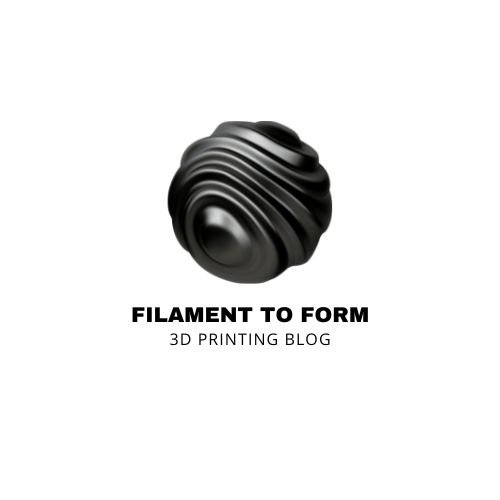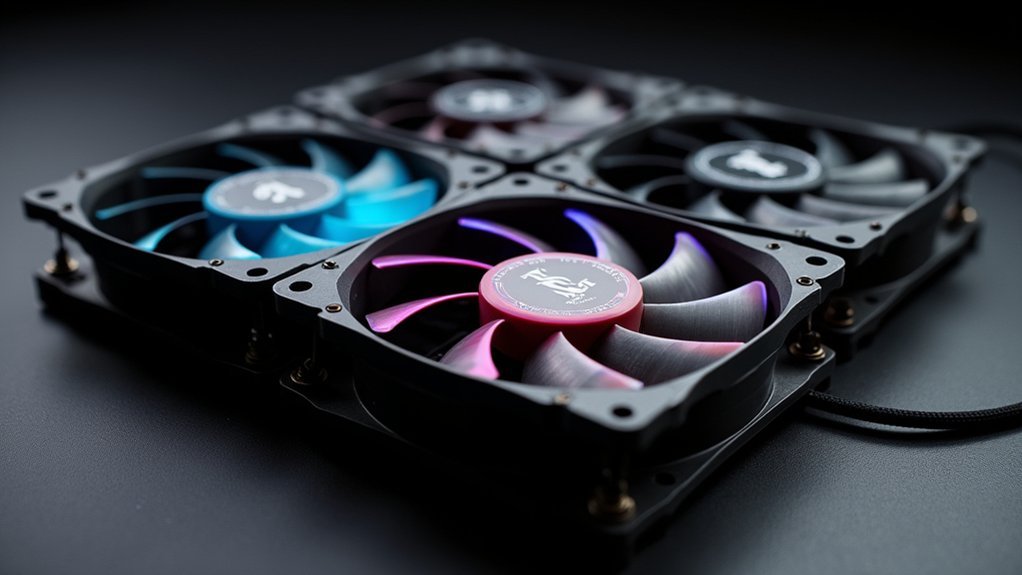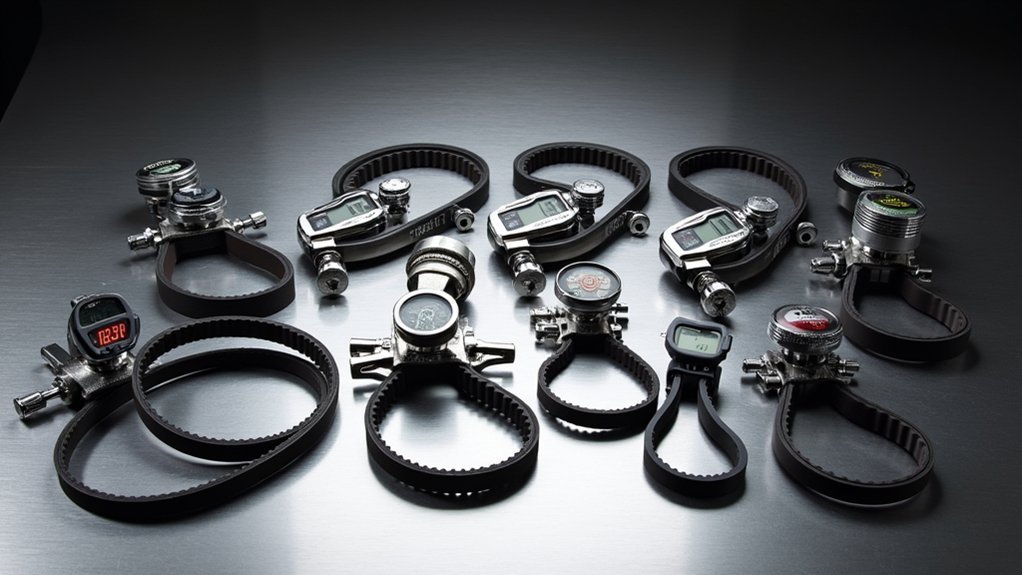You’re probably tired of squinting at tiny screens and fumbling through confusing menus while your 3D printer sits idle. The right touchscreen display can transform your printing experience from frustrating to seamless, but with dozens of options flooding the market in 2025, you’ll need insider knowledge to make the smart choice. Some displays promise the world yet deliver disappointment, while others quietly revolutionize how you interact with your machine.
Ender-3 Series Touch Screen for Creality 3D Printer (4.3 inch Full-Color HD Display)
The Ender-3 Series Touch Screen transforms your Creality 3D printer experience with its 4.3-inch full-color HD display that’s specifically engineered for hobbyists and makers who want professional-grade control without complexity. You’ll appreciate the modular design that enables straightforward installation on your Ender-3, Ender-3S, Ender-3 Pro, or Ender-3 V2. The tilted screen provides ideal visibility while operating your printer. You can switch between nine languages instantly, including English, German, Chinese, and Spanish. The 24-bit color technology delivers crisp visuals with excellent contrast. Plus, you’ll benefit from expanded storage capacity with JPEG compression support for storing multiple project files efficiently.
Best For: Creality Ender-3 series 3D printer owners who want to upgrade from basic controls to an intuitive touchscreen interface with enhanced visibility and multilingual support.
Pros:
- Easy modular installation with tilted screen design for optimal viewing angles during printer operation
- Supports 9 languages with one-key switching, making it accessible to international users
- Enhanced storage capacity with JPEG compression allows for efficient file management and project storage
Cons:
- Limited compatibility only to Ender-3 series printers, excluding other 3D printer brands and models
- No mention of advanced features like wireless connectivity or cloud integration that some users may expect
- Upgrade cost may not be justified for users who are satisfied with basic printer controls
BIGTREETEHCH TFT35 E3 Touch Screen Display for 3D Printer Control Board
BIGTREETECH’s TFT35 E3 V3.0.1 stands out as an exceptional upgrade for Ender 3 owners seeking enhanced control over their 3D printing experience. You’ll appreciate its powerful ARM Cortex-M3 processor running at 120MHz, delivering responsive performance for seamless operation.
What sets this display apart is its dual working modes—you can switch between UART serial port and 12864 screen modes while your printer’s running. The versatile printing options include SD card and USB functionality with both Marlin-style and full-color touch interfaces.
You’ll benefit from expansion features like filament break detection, automatic shutdown, and optional WiFi connectivity through external modules, making it compatible with various printer boards beyond Ender series.
Best For: Ender 3 owners and 3D printing enthusiasts who want to upgrade their printer’s control interface with advanced features like dual operating modes, touch screen functionality, and enhanced connectivity options.
Pros:
- Dual working modes allow switching between UART serial port and 12864 screen modes during operation for maximum flexibility
- Powerful ARM Cortex-M3 processor at 120MHz provides responsive performance and smooth touch interface experience
- Comprehensive expansion features including filament break detection, automatic shutdown, WiFi capability, and compatibility with multiple printer boards beyond Ender series
Cons:
- May require printing a custom enclosure for compatibility with different display panel styles on non-Ender printers
- WiFi functionality requires purchasing and installing an additional external module rather than being built-in
- Limited to compatibility with specific control boards, potentially requiring users to verify compatibility before purchase
YLRR Ender 3 Screen Frame Replacement for Creality Ender-3
Budget-conscious makers seeking an affordable display upgrade for their Creality Ender-3 series printers will find the YLRR Ender 3 Screen Frame Replacement delivers essential functionality without breaking the bank. You’ll get a high-resolution 128×64 pixel LCD screen that enhances readability and menu navigation. Installation takes just minutes with the included ribbon cable—no technical expertise required. The rotary encoder knob provides faster response times, making your printing process smoother. Built with premium materials, it’s scratch-resistant and reliable. Best of all, the plug-and-play design typically won’t require firmware updates, ensuring hassle-free compatibility with Ender-3, Ender-3 PRO, Ender-5, and Ender-5 PRO models.
Best For: Budget-conscious makers with Creality Ender-3 series printers who want an affordable display upgrade that offers enhanced readability and menu navigation without requiring technical expertise or firmware modifications.
Pros:
- Quick and easy installation in minutes with included ribbon cable and plug-and-play design that typically requires no firmware updates
- High-resolution 128×64 pixel LCD screen with improved readability and responsive rotary encoder knob for smoother navigation
- Durable construction with scratch-resistant materials and broad compatibility across Ender-3, Ender-3 PRO, Ender-5, and Ender-5 PRO models
Cons:
- Limited to basic display functionality without advanced features found in higher-end screen upgrades
- 128×64 pixel resolution may still feel outdated compared to modern color touchscreen alternatives
- No mention of warranty coverage or customer support quality for potential issues
CREALITY Space Pi Filament Dryer Plus (2 Spools 360° 160W PTC Fast Heating)
Managing dual filament workflows becomes effortless with the CREALITY Space Pi Filament Dryer Plus, making it an ideal choice for makers who regularly print with multiple materials or run continuous production cycles. You’ll appreciate the 4-inch LCD touchscreen that simplifies operation with one-key presets for twelve filament types, including PLA, ABS, PETG, and TPU. The interface lets you track temperatures and switch between Celsius and Fahrenheit easily. With 110W PTC heating and 360° circulation, you’re getting uniform moisture removal across both spools. The system accommodates 99% of FDM filaments in 1.75mm and 2.85mm diameters, though some users report feeding challenges through tight openings.
Best For: 3D printing enthusiasts and professionals who work with multiple filament types simultaneously and need efficient moisture removal to maintain print quality.
Pros:
- Dual spool capacity with 110W PTC heating and 360° circulation provides uniform moisture removal for two filaments at once
- 4-inch LCD touchscreen with one-key presets for 12 filament types makes operation simple and user-friendly
- Compatible with 99% of FDM filaments in both 1.75mm and 2.85mm diameters with temperature control from 45°C to 70°C
Cons:
- Tight filament feed openings can cause feeding difficulties and jams during direct printing
- Some users report touch screen responsiveness issues and concerns about overall product durability
- Customer service quality varies based on user feedback and support experiences
GK3 Pro 16K 9.6-Inch Resin 3D Printer with App Control
The GK3 Pro’s massive 9.6-inch 16K display transforms resin printing into a precision powerhouse that’s perfect for professionals and enthusiasts who demand exceptional detail quality. You’ll achieve near-microscopic accuracy with its 15120 x 6230 resolution and 14 x 19 μm XY precision. The high-transmittance screen paired with 385nm COB lighting delivers 88% light uniformity for consistent curing across your entire build plate. You can print larger models or multiple parts simultaneously thanks to the generous 211 x 118 x 240mm build volume. Smart features like auto-detected heating and continuous resin feeding streamline your workflow for professional results.
Best For: Professional designers, engineers, jewelry makers, and serious hobbyists who need exceptional detail quality and precision for intricate models, prototypes, or small batch production runs.
Pros:
- Exceptional 16K resolution with 14 x 19 μm precision delivers near-microscopic detail quality that brings even the most intricate designs to life
- Large 9.6-inch build volume allows printing of bigger models or multiple parts simultaneously, maximizing productivity and efficiency
- Smart automation features including auto-detected heating system and continuous resin feeding reduce manual intervention and streamline workflow
Cons:
- High price point and substantial 53.7-pound weight make it a significant investment that may not suit casual hobbyists or those with limited workspace
- Large resin capacity requirements and 16K screen complexity likely result in higher operational costs and potentially more expensive maintenance
- Substantial footprint at 17.3 x 15 x 10.2 inches requires dedicated workspace and may not fit in smaller home offices or workshops
Factors to Consider When Choosing the Most User-Friendly Touchscreen Displays for 3D Printers
When you’re selecting a touchscreen display for your 3D printer, you’ll need to evaluate several critical factors that directly impact your printing experience. The screen size and resolution quality determine how clearly you can view print details and navigate menus, while interface language support guarantees you can operate the system comfortably. You should also verify installation compatibility with your printer model and assess the touch response speed to avoid frustrating delays during operation.
Screen Size Requirements
Visibility becomes essential when selecting a touchscreen display for your 3D printer, as the screen size directly impacts how easily you’ll navigate menus and monitor print progress. You’ll find the ideal range spans from 4.3 to 9.6 inches, striking a balance between visibility and space efficiency.
If you’re handling complex printing tasks, larger 9.6-inch screens offer enhanced readability and easier menu navigation. However, you can opt for 4.3-inch displays when working with basic functions or compact printer setups. Remember that resolution should complement your chosen size – higher resolutions deliver clearer images and text for better interaction. Don’t overlook positioning either; properly angled screens reduce strain and improve accessibility during operation.
Display Resolution Quality
Resolution quality determines how crisp and detailed your 3D printer’s touchscreen interface appears, making it a critical factor in your overall user experience. You’ll want to prioritize displays with 24-bit color technology, which delivers clearer views and superior contrast for easier navigation. High-resolution screens like 15120 x 6230 offer near-microscopic accuracy that’s essential when rendering detailed models on your display.
Higher pixel density directly improves menu readability, making it easier to monitor and control your printing process. This clarity becomes especially important when you’re printing complex models requiring precise adjustments during printing. You should also verify your chosen touchscreen supports multiple resolutions, enhancing compatibility with various printer models while allowing you to customize the interface according to your specific preferences and printing requirements.
Interface Language Support
Interface language support plays a pivotal role in making your 3D printer’s touchscreen truly user-friendly, especially if English isn’t your primary language or you’re sharing the printer with international team members. Look for displays that support multiple languages—advanced interfaces can accommodate up to nine different languages including English, Spanish, German, French, and Chinese.
One-key language switching features are particularly valuable, allowing you to change languages instantly without traversing through complex menus. This functionality greatly reduces the learning curve for new users and makes operation more intuitive across diverse demographics.
Multilingual support enhances accessibility worldwide, ensuring that language barriers don’t prevent you from maximizing your 3D printer’s capabilities and achieving professional results.
Installation Compatibility Check
Before purchasing any touchscreen display, you’ll need to verify complete compatibility with your specific 3D printer model to avoid costly installation headaches. Start by confirming the display’s designed specifically for your printer’s make and model, ensuring perfect hardware integration. Check what’s included in the package—you might need additional ribbon cables or mounting brackets that aren’t always provided.
Look for thorough installation guides that don’t require advanced technical expertise. Many manufacturers provide step-by-step instructions that make screen replacement straightforward for average users. Verify firmware compatibility is essential, as mismatched software can render your new display unusable or limit functionality.
Consider displays offering multiple operating modes, which can enhance your printing experience through versatile settings and improved user interaction during various printing tasks.
Touch Response Speed
When you’re maneuvering through printer settings or making real-time adjustments, touch response speed becomes the difference between smooth operation and frustrating delays. You’ll want a touchscreen that responds in less than 50 milliseconds to guarantee immediate feedback from your inputs. This responsiveness prevents the common issue of tapping multiple times because you’re unsure if your command registered.
Advanced capacitive touch technology delivers the sensitivity and accuracy you need for quick, precise interactions. Look for displays with multi-touch capabilities that let you perform simultaneous actions, boosting your operational efficiency. A responsive touchscreen dramatically cuts down the time you’ll spend adjusting settings, making your entire 3D printing workflow more intuitive and productive.
Operating Mode Flexibility
Operating mode flexibility determines how well your touchscreen display adapts to different printing scenarios and user preferences. You’ll want a display that switches between different screen interfaces, such as UART serial port mode and 12864 screen mode, accommodating your specific setup requirements. Look for touchscreens with dual working modes that support both SD card and USB printing, ensuring you can print from various file sources without compatibility issues.
The best displays adapt to different printer configurations through simple mode switching, greatly improving your printing experience. Consider models with multi-function expansion interfaces that enable additional features like filament detection and WiFi connectivity. A user-friendly interface supporting multiple languages makes operation more accessible, especially if you’re part of the diverse 3D printing community.
Frequently Asked Questions
Can I Upgrade My Existing 3D Printer With Any Touchscreen Display?
You can’t upgrade every 3D printer with any touchscreen display. You’ll need to check your printer’s compatibility, firmware requirements, and available connectors. Some models require specific displays or firmware modifications to work properly.
Do Touchscreen Displays Affect 3D Printing Speed or Quality?
Touchscreen displays don’t directly affect your 3D printing speed or quality. They’re user interfaces that control your printer’s settings. However, you’ll find they make adjustments easier, potentially helping you optimize print parameters more efficiently.
Are Touchscreen Displays Compatible With All 3D Printer Firmware Versions?
You’ll find touchscreen displays aren’t universally compatible with all firmware versions. You need to check compatibility between your specific display model and firmware like Marlin, Klipper, or RepRapFirmware before purchasing.
How Do I Calibrate a New Touchscreen Display After Installation?
You’ll need to access your printer’s firmware settings menu, then navigate to the display calibration option. Follow the on-screen prompts to touch specific points, allowing the system to properly map your touchscreen’s coordinates.
What Happens if My Touchscreen Display Stops Working Mid-Print?
Your print will likely continue running since the printer’s firmware operates independently. You can’t monitor progress or make adjustments, but the print should complete successfully unless you need to intervene.





Leave a Reply